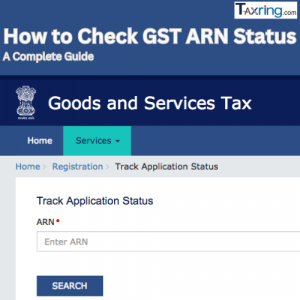
What are the Personal Income Tax Reforms for Middle class and more in 2025 Budget?
In the Union Budget 2025-26, Finance Minister Nirmala Sitharaman announced a series of significant personal income tax reforms aimed at providing relief to the middle class and stimulating economic growth. These reforms include revised tax slabs, increased exemptions, and higher standard deductions, all of which are expected to benefit salaried individuals and small taxpayers. Let’s take a closer look at these changes and their implications.
Revised Income Tax Slabs Under the New Tax Regime
The government has introduced revised income tax slabs under the new tax regime to make taxation more streamlined and beneficial for middle-class earners. The updated tax slabs are as follows:
- Income up to ₹4 lakh: No tax
- ₹4 lakh to ₹8 lakh: 5%
- ₹8 lakh to ₹12 lakh: 10%
- ₹12 lakh to ₹16 lakh: 15%
- ₹16 lakh to ₹20 lakh: 20%
- ₹20 lakh to ₹24 lakh: 25%
- Above ₹24 lakh: 30%
One of the major highlights of these reforms is the increase in the income tax exemption limit, which has been raised to ₹12 lakh under the new tax regime. This means that individuals earning up to ₹12 lakh annually will not be required to pay any income tax. Additionally, for salaried taxpayers, the standard deduction has been increased from ₹50,000 to ₹75,000, which effectively raises the tax-free income threshold to ₹12.75 lakh. How to calculate your income tax liability: a step-by-step guide?
Impact on Taxpayers
The revised tax slabs and deductions will significantly reduce the tax burden on individuals across different income levels. Below is an example of how these changes impact taxpayers at different income levels:
- For an individual earning ₹12 lakh per annum: No tax liability due to the increased exemption limit.
- For an individual earning ₹15 lakh per annum: The tax payable will be ₹1.05 lakh, resulting in a saving of ₹35,000 compared to the previous tax regime.
- For an individual earning ₹20 lakh per annum: The tax payable will be ₹2 lakh, leading to a saving of ₹90,000.
- For an individual earning ₹25 lakh per annum: The tax payable will be ₹3 lakh, providing a saving of ₹1.1 lakh.
These changes aim to provide immediate financial relief, increase disposable income, and encourage savings and investments among taxpayers.
Objectives Behind the Tax Reforms
The primary objective of these personal income tax reforms is to reduce the tax burden on the middle class and stimulate economic activity. The government anticipates several positive outcomes from these changes:
- Boosting Disposable Income: With lower tax rates and higher exemptions, taxpayers will have more money in hand, leading to increased household consumption and spending, which in turn benefits businesses and the overall economy.
- Encouraging Investments: With more savings due to reduced tax liabilities, individuals are likely to invest in financial instruments such as mutual funds, fixed deposits, and real estate, thereby fostering economic growth.
- Promoting Compliance: The simplified tax structure makes it easier for taxpayers to understand and comply with tax regulations, reducing instances of tax evasion.
- Enhancing Economic Growth: By increasing purchasing power, these reforms are expected to drive demand in key sectors such as retail, housing, and automobiles, creating employment opportunities and boosting GDP growth.
Comparison with the Old Tax Regime
The new tax regime is structured to be more attractive than the old one, which had higher tax rates but allowed for deductions under various sections such as 80C, 80D, and HRA exemptions. Under the new system, taxpayers benefit from lower rates and a higher exemption limit, making it a more straightforward and hassle-free taxation method.
However, individuals who have significant investments in tax-saving instruments under the old regime may need to evaluate their financial situation before transitioning to the new tax system.
Sectoral Impact of Tax Reforms
The revised tax slabs and exemptions are expected to have a far-reaching impact on multiple sectors, including:
- Banking and Financial Services: Increased savings and disposable income will lead to higher deposits and investments in financial products.
- Real Estate: Lower tax liabilities may encourage more home purchases, boosting demand in the housing market.
- Retail and Consumer Goods: Higher disposable income will likely result in increased spending on consumer goods and services, benefiting the retail industry.
- Automobile Industry: Increased affordability and purchasing power could drive demand for vehicles, supporting the auto sector’s growth.
Government’s Perspective
The government has justified these tax reforms as part of its broader vision of making taxation simpler and more beneficial for the common man. The Finance Minister emphasized that these changes are in line with India’s goal of achieving higher economic growth while ensuring financial stability for its citizens. Smart tax filing for smart people – e-file your income tax with ease!
Moreover, the government expects that the reduction in tax rates will not lead to a significant loss in revenue, as increased compliance and higher economic activity will offset potential shortfalls.
Conclusion
The personal income tax reforms introduced in Budget 2025-26 represent a major shift towards a more taxpayer-friendly and simplified tax structure. The increase in the exemption limit to ₹12 lakh, the revised tax slabs, and the higher standard deduction will bring much-needed relief to the middle class while boosting economic growth. These changes are expected to enhance disposable income, drive investment, and encourage financial stability among taxpayers.
With these measures in place, the government aims to create a more equitable taxation system that benefits individuals while contributing to the country’s long-term economic prosperity.




